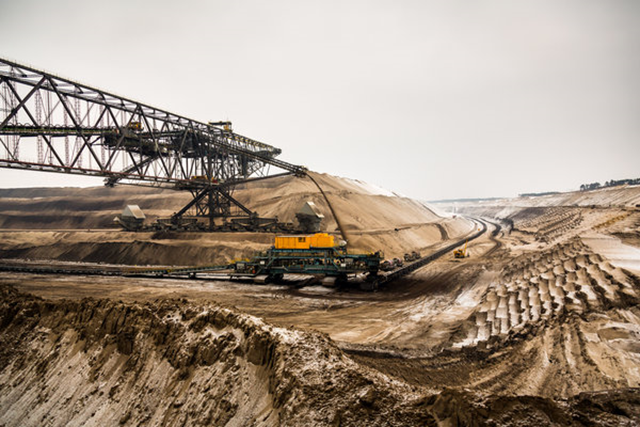German village resists plans to strip it away for the coal underneath
By MELISSA EDDY
18 February 2014 ATTERWASCH, Germany (The New York Times) – A grove of apple saplings grows on the lee side of Ulrich Schulz’s barn. He did not plant them for the fruit, he said, but as an act of rebellion against a nearby mining company that wants to raze his farm, which his family has owned since 1560, to get at the coal beneath his land. “A nod to Martin Luther,” said Mr. Schulz, 53, gesturing at the two rows of spindly trees. “He said that if he knew the world was coming to an end, he would plant an apple tree.” It may not be the end of the world, but it could be the end of Atterwasch, population 241. While Chancellor Angela Merkel has promised her country a future virtually free of fossil fuels, it may seem strange that this village in eastern Germany, and two neighboring ones, are still fighting plans to wipe them, quite literally, off the map. But Germany’s sudden hunger for coal has emerged as the dirty side of Ms. Merkel’s ambitions to shut down the country’s nuclear power plants by 2022 and eventually move Germans mostly to renewable energy. In fact, last year Germany burned more brown coal than at any time since its Communist-era factories began closing in 1990, according to AG Energiebilanzen, an association that tracks energy consumption. The problem is that there are days when the wind does not blow and clouds fill the sky. With eight nuclear reactors shut since 2011 and the push for renewable energy still in its infancy, the country needs to bridge the power gaps. That has only increased Germans’ craving for coal, even though their energy diet is supposed to be shifting. For Mr. Schulz and his neighbors, the battle to save Atterwasch is akin to not wanting to be the final casualty of a lost war, in a region where about 25,000 people have already been uprooted by mines over the years. “Nobody wants to be the last one,” Mr. Schulz said, contemplating the bright green of a young crop of rye on a balmy winter day. Eckhard Schulz, Ulrich’s brother, said he was struck by that fact recently, while touring the nearby open-pit mine at Jänschwalde with his future son-in-law, a landscaper employed for reclamation projects by Vattenfall, the Swedish company that runs the mine. They encountered a small sign on the spot where a church in the village of Horno had stood for centuries. Until 2003. That was when Horno became the most recent of 136 villages swallowed by open-pit mines in the region of Lusatia since 1924, according to the Archive of Lost Places, a local documentation center about the relocated villages. “I stopped and I realized in the future, that could be our church,” said Eckhard Schulz, who helps care for the three bells in the tower of Atterwasch’s medieval church. The oldest bell, he notes, was cast in 1460, before Columbus reached America. “Suddenly, I wanted to turn back. I didn’t want to see anything more.” [more]
German Village Resists Plans to Strip It Away for the Coal Underneath
